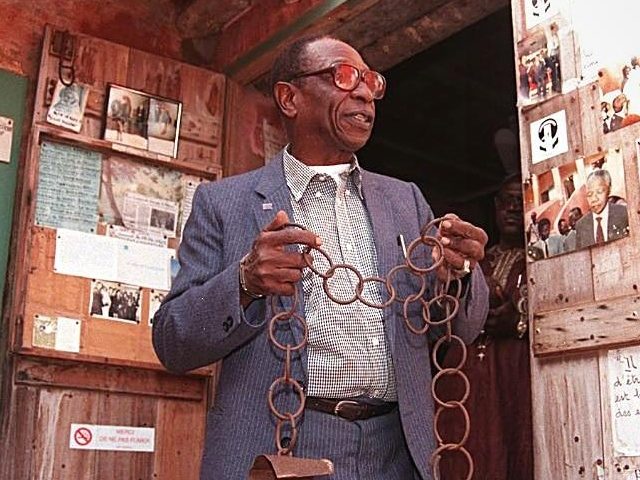A former slave trade center in west Africa’s Senegal has changed the name of its main square in response to the ongoing protest movement sparked by the police killing of black American George Floyd, Voice of America (VOA) reported on Tuesday.
Located just off Senegal’s Atlantic coast on the small island of Goree, the former slave trade center, known as the House of Slaves, was designated a UNESCO World Heritage Site in 1978 “as a symbolic reminder of human exploitation,” the U.N. agency said. The site’s main square was renamed on Tuesday from “Europe Square” to “Freedom and Human Dignity Square” the local municipal council announced.
The square’s “original name was given in 1998 after European funding paid for renovations at the UNESCO World Heritage site,” VOA noted.
“The name Europe Square was, in a way, a symbol of friendship between peoples,” said Doudou Dia, the president of Goree island’s tourism commission. “But we also said to ourselves … that in another sense it is celebrating the persecutor. What happened to George Floyd was the final straw.”
George Floyd, a black American, died on May 25 while in police custody in the U.S. city of Minneapolis after a white police officer kept his knee on Floyd’s neck for almost nine minutes during an arrest. The police killing was captured on video that went viral and sparked massive protests and riots that are ongoing across the U.S. The protests have since gained worldwide exposure, as evidenced by the African site’s renaming of its square on Tuesday.
Goree island has become a major tourist attraction in Senegal, generating much-needed revenue for the poor nation, where “more than one-third of the population lives below the poverty line, and 75 percent of families suffer from chronic poverty,” the World Food Programme reported. The House of Slave’s importance has been discounted by historians and journalists as a “local invention” and money-making “scam.”
In 2013, when former U.S. President Barack Obama visited the site, the Associated Press (AP) said:
[W]hile the house may have housed slaves, they were likely those belonging to the family who lived there, rather than slaves intended for the trans-Atlantic passage, according to numerous publications as well as three historians of the slave trade interviewed by The Associated Press.
According to the AP, the site’s significance has been trumped up to generate publicity and tourists:
From 1501 to 1866, an estimated 12 million slaves from Africa were sent to North America, according to a database created by scholars using shipping records and plantation registers. Of these, only 33,000 came from Goree Island, an insignificant portion of the overall total, the database shows. Yet the plaques which grace the stone walls of the Slave House speak of the “millions” of slaves that passed through its halls.
In addition to Obama, Nelson Mandela, Pope John Paul II, and former U.S. presidents Bill Clinton and George Bush have also visited Goree island, according to the report.

COMMENTS
Please let us know if you're having issues with commenting.